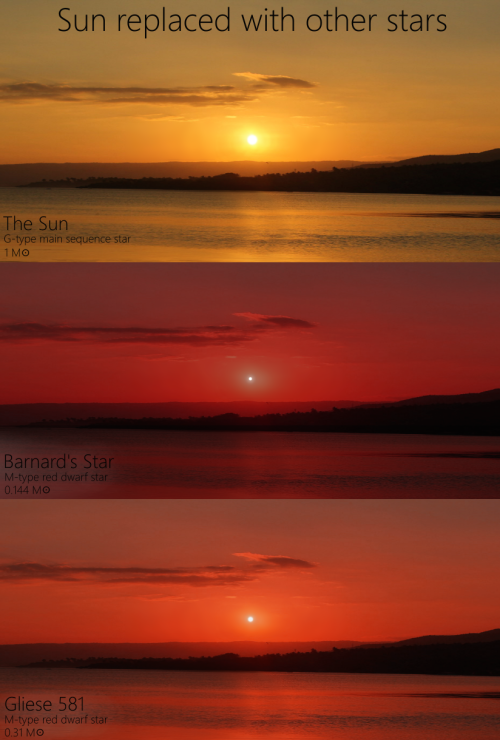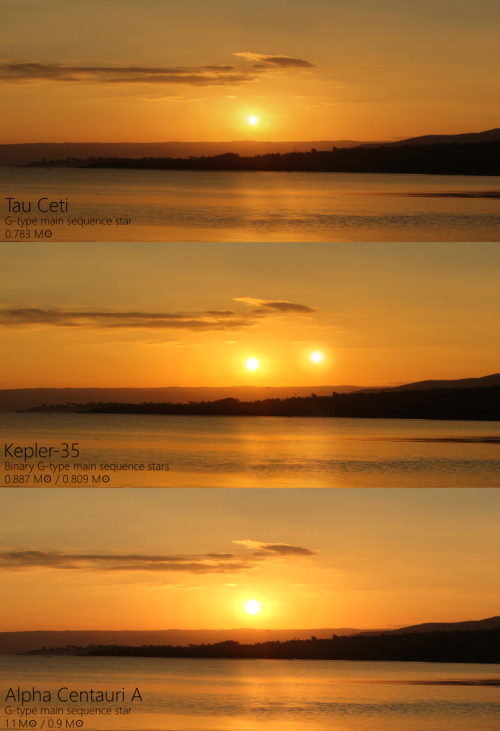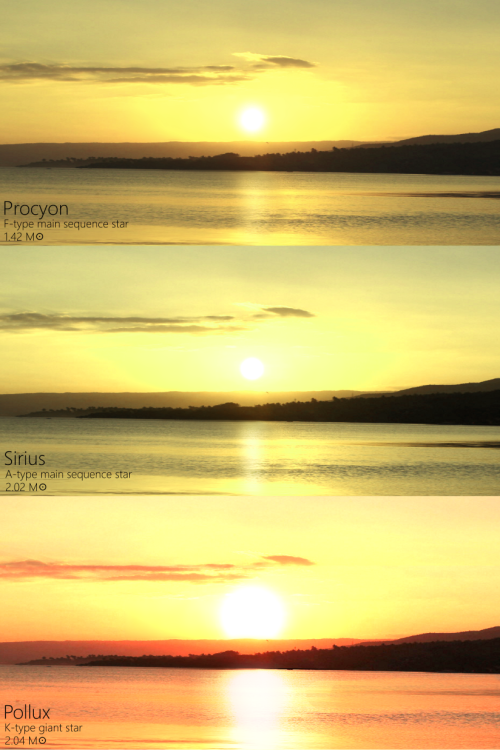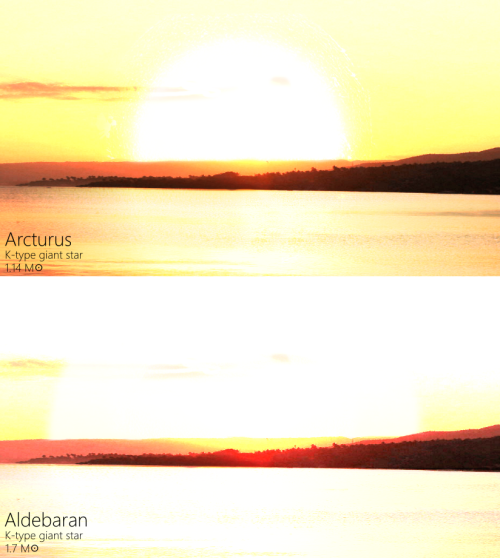Spiral Galaxy M106 & Spiral Galaxy M83 By Hubble Heritage


Spiral Galaxy M106 & Spiral Galaxy M83 by Hubble Heritage
More Posts from Catchconstellations-blog and Others

(via A Knight's Mission to Mars)
Hey everyone! I recently had the opportunity to work on and publish an article about student opportunities in the space industry in the University of Central Florida’s student-run publication Imprint. Please feel free to check out my article and see the other awesome work Imprint has!
Thoughts on the ISS Water Systems
Recently, I was asked by my research mentor to conduct a literature review on the drinking water systems aboard the International Space Station. Let me say this: the technology and the people aboard the ISS really know how to recycle water!
Here are some cool facts I discovered while doing this research:
- Sweat, pee, and tears are all recycled through intensive chemical and physical processes
- There is no way to recycle/reuse solid waste like brine yet, so it is packaged and sent back down to Earth through payloads
- The ISS has a motherboard-like program called the Environmental Control and Life Support System (ECLSS) that basically outlines in detail all the processes that need to be in order to sustain life aboard the spacecraft
- The ISS is currently able to support six living crewmembers aboard, but it is not 100% sustainable because chemical resources (oxygen, water, etc.) are invariably lost over time
Just some things I found interesting. I was glad to do this kind of literature review because it gives me an outlook on how much progress we still need to make in trying to achieve long-term space travel and habitation.
A Personal Update
Hello everyone! This is just a quick behind-the-blog update from me.
I’ve been applying to NASA internships for the past three months, and I’m sad to say that I was not chosen for any of them.
I must admit it broke my heart a little bit to see the positions I applied for fill up with no offer extended to me. I really thought I had a good shot at a few of them this time around. I really thought I had a chance.
I’m writing this because I want everyone to know that is natural to feel frustrated and disappointed, and that whatever setback you may encounter is not the end of the world. Just as there are countless stars in the night sky, there are just as many opportunities still waiting for you to find them.
Yes, my heart is heavy from this, but I know I’ll bounce right back. Rejection is a part of life, after all, and no one ever made it to the stars after giving up because of a few rejections.
I’m going to keep moving forward, with my eyes on the stars, doing what I love to do, and I know I’ll get where I want to be someday.
Until then, ad astra!

First Discovery of Atmosphere on Known Exoplanet
While news of Trappist-1′s potentially inhospitable environment made its way through the news feeds, a new discovery emerged to make up for it: an existing atmosphere on exoplanet GJ1132b.
Located 39 light years away (just around the corner in galactic terms), the exoplanet is similar to Earth in size and mass, and is in close-orbit to its star: a dim red dwarf just slightly cooler and smaller than our own Sun. It was discovered in 2015, but it’s only now that scientists have been able to take a closer look at its composition.
While the distance between GJ and its host star is more similar to the one between Venus and our Sun, therefore most likely rendering the exoplanet incapable of hosting life due to extreme surface temperatures of up to 370 degrees Celsius/700 degrees Fahrenheit, the most important aspect to focus on is the discovery is the atmosphere that exists on GJ.
Using advanced technology that picks out biochemical signatures such as those of oxygen, methane, and hydrogen, scientists have identified a thick atmosphere of either steam or methane surrounding GJ. While this is not a certain indicator of life, it is an crucial step in increasing our knowledge of potentially habitable alien planets out there.
It is definitely interesting to see that scientists have found the first alien atmosphere that isn’t Earth’s. It seems that many of the Earth-like planets scientists have discovered are inclined to orbit red dwarf stars like Earth and that of GJ1132b. I wonder if we specifically target finding red dwarves, will wel increase our chances of finding more and more Earth-like exoplanets that could be capable of having life? It’s something to think about as we continue moving into the future.




The Sun replaced with other Stars
This visualization shows how the sunset could look like to a human observer if our Sun was replaced by some of the other stars in our galaxy with different sizes and magnitudes, namely Barnard’s Star, Gliese 581, Tau Ceti, Kepler-23, Alpha Centauri A, Procyon, Sirius, Pollux, Arcturus and Aldebaran.
It is just a concept, as liquid water and the Earth as we know it could not exist in the vicinity of the most stars in this graphic. Visualizations are based on the absolute brightness, spectral class and the radius of each star.
by Martin Vargic
Meet Our 7 Newest Planetary Neighbors
On Wednesday, February 22, NASA took the whole world by storm when they announced the incredible discovery of 7 Earth-sized exoplanets – all of which could potentially have the right conditions for life to exist!
While there has been a relatively continuous stream of newly found exoplanets in the past years, this exoplanet system, named TRAPPIST-1 for the Chile-based telescope that first discovered the planets back in May, is particularly special because of three main reasons:
1.) They are considered relatively close (40 light years/235 trillion miles) to Earth.
2.) They are the first known system of Earth-sized planets that orbit a single parent star, with 3 planets located in the “Goldilocks zone”, the astrophysical orbit that has just the right conditions for allowing liquid water, and by extension, life, to exist. While all 7 could have liquid water, these 3 have the highest chances.
3.) Their parent star, an ultra-cool dwarf, has temperatures so low that liquid water can exist on the planets closest to it; what’s more, the planets are so incredibly close to their parent star – all 7 are closer to their parent star than Mercury is to our own Sun – that someone standing on the surface of each planet could potentially see the physical features of the other planets.
The implications of this find is mind-blowing: at the moment, Earth is the only planet we know that exists with liquid water in our solar system’s Goldilocks zone. We have no other suitable planet we can use for comparison, which is why the search for life in outer space can seem futile. But this discovery of 7 whole Earth-sized planets with the right conditions for water and life to flourish sparks the age-old question into overdrive – are we alone in the universe or not?
Earth is no longer the potentially only life-sustaining planet; we have 7 exoplanets, 3 in the Goldilocks zone, that can harbor water and life. That just blows my mind, and while I have often lamented in the past that I was born too late for traveling the world and too early for exploring space, I am grateful to be alive in this time of immense space-science discovery.
But what next? We’ve discovered this new system, what are we going to do about it? According to NASA, a new telescope called the James Webb Space Telescope will be launched in 2018. Equipped with state-of-the-art technological capabilities such as increased sensitivity sensors, it will be able to detect chemical signals present in a planet’s atmosphere such as methane, oxygen, and water. And hopefully, it will tell us more about our 7 new neighbors – and what could be on them.
Hey Dianne. I love love love this theme! It is sooo cool. I have no idea how you did it (was it witchcraft?!?!). I love that you have this calming music playing as well. everything is just awesome --Jennifer Holden
Hi Jennifer, thank you so much for visiting my blog! The theme took forever to edit and format, but I think it’s totally worth it :D
Extraterrestrial Life May Be Closer Than We Think
Just when we think we have the universe somewhat figured out, it throws us a massive curveball from our very own backyard. Hold on to your telescopes, everyone, because one of our own planetary neighbors right around the corner may have the right conditions for extraterrestrial life.
On April 14, a paper published in Science Mag pointed out biochemical signatures of hydrogen production in the hydrothermal reactions in the form of plumes that erupt from the ice surface of Enceladus, one of Saturn’s moons. Molecular hydrogen is one of the building blocks of life because it is the ideal food source for microbes and bacteria, which are at the forefront of every food and energy chain (at least on Earth). This implies that the ocean beneath the ice has enough chemical activity and organic matter to maintain the right conditions to sustain life, at least on the molecular level. This kind of chemistry can indicate habitable zones in Enceladus’ ocean.
To provide a bit of a context from here on Earth: our own oceans contain deep-sea hydrothermal vents that are home to complex and important ecosystems that allow microorganisms to live and grow by using energy from the minerals produced by these vents. These microorganisms are necessary for food and energy chains to form since larger organisms feed on these microorganisms and create entire ecological communities. Many scientists have pointed out these kinds of superheated environments as prime locations for life to begin.
But having the right conditions for life doesn’t mean already harboring life. There is still a lot that we don’t know about what’s going on below the surface of Enceladus. While scientists have known about its ocean since 2005, it is only now that technology has improved to the point where it can pick up sensitive biochemical signatures and provide a more detailed picture of Saturn’s icy moon.
Recently, NASA has announced a mission called Europa Clipper that will explore Europa, another one of Jupiter’s icy moons with an ocean. It will launch sometime in the 2020s. Perhaps NASA will consider stopping by Enceladus...who knows what we can find there?
No pessimist ever discovered the secret of the stars, or sailed to an uncharted land, or opened a new doorway for the human Spirit.
Helen Keller

(via the-wolf-and-moon)
-
 tery60 liked this · 1 year ago
tery60 liked this · 1 year ago -
 tomasma76 liked this · 1 year ago
tomasma76 liked this · 1 year ago -
 cowboy-1966 liked this · 2 years ago
cowboy-1966 liked this · 2 years ago -
 78291-blog liked this · 2 years ago
78291-blog liked this · 2 years ago -
 juanchotmb reblogged this · 2 years ago
juanchotmb reblogged this · 2 years ago -
 juanchotmb liked this · 2 years ago
juanchotmb liked this · 2 years ago -
 riceli liked this · 2 years ago
riceli liked this · 2 years ago -
 bullet75 liked this · 2 years ago
bullet75 liked this · 2 years ago -
 lauraatulsa reblogged this · 3 years ago
lauraatulsa reblogged this · 3 years ago -
 lauraatulsa liked this · 3 years ago
lauraatulsa liked this · 3 years ago -
 scvrlettnicole reblogged this · 3 years ago
scvrlettnicole reblogged this · 3 years ago -
 whatthatmoufdo reblogged this · 3 years ago
whatthatmoufdo reblogged this · 3 years ago -
 ouramazingbeautifulworld liked this · 3 years ago
ouramazingbeautifulworld liked this · 3 years ago -
 scvrlettnicole liked this · 3 years ago
scvrlettnicole liked this · 3 years ago -
 mega-tabata77 liked this · 3 years ago
mega-tabata77 liked this · 3 years ago -
 batrikstuff liked this · 3 years ago
batrikstuff liked this · 3 years ago -
 asyouare19 reblogged this · 3 years ago
asyouare19 reblogged this · 3 years ago -
 asyouare19 liked this · 3 years ago
asyouare19 liked this · 3 years ago -
 spydermaxxx45 liked this · 3 years ago
spydermaxxx45 liked this · 3 years ago -
 wildernestt reblogged this · 4 years ago
wildernestt reblogged this · 4 years ago -
 wildernestt liked this · 4 years ago
wildernestt liked this · 4 years ago -
 paaranoiaa reblogged this · 4 years ago
paaranoiaa reblogged this · 4 years ago -
 koszanova liked this · 4 years ago
koszanova liked this · 4 years ago -
 bkrsszlrd reblogged this · 4 years ago
bkrsszlrd reblogged this · 4 years ago -
 bkrsszlrd liked this · 4 years ago
bkrsszlrd liked this · 4 years ago -
 ladymavet reblogged this · 4 years ago
ladymavet reblogged this · 4 years ago -
 ladymavet liked this · 4 years ago
ladymavet liked this · 4 years ago -
 helsinkiaznyugate reblogged this · 4 years ago
helsinkiaznyugate reblogged this · 4 years ago -
 helsinkiaznyugate liked this · 4 years ago
helsinkiaznyugate liked this · 4 years ago -
 didanawisgi reblogged this · 4 years ago
didanawisgi reblogged this · 4 years ago -
 limousineridinjetflyin reblogged this · 4 years ago
limousineridinjetflyin reblogged this · 4 years ago -
 82knightstand liked this · 4 years ago
82knightstand liked this · 4 years ago -
 united-twosday reblogged this · 4 years ago
united-twosday reblogged this · 4 years ago -
 hexengen liked this · 4 years ago
hexengen liked this · 4 years ago -
 dream-about-time liked this · 4 years ago
dream-about-time liked this · 4 years ago -
 seepephillip0 liked this · 4 years ago
seepephillip0 liked this · 4 years ago -
 markosts liked this · 4 years ago
markosts liked this · 4 years ago
CONSTELLATION: (noun) Group of stars that form a recognizable pattern to which a mythological or earth-based name is assigned Pattern of stars whose name or is associated with different stories and meanings Story told by stars connected across the infinite night sky, overlapping with countless other stories that have unfolded from ancient supernovas, whose imaginary lines urge our eyes up from the chaos of the world around us to the unknown vastness in which we are but a speck of dust -------- Hi! I’m a starry-eyed astrogeek named Dianne who loves absolutely everything that has to do with the stars and outer space. When I’m not studying or preparing to take over NASA one day, you can find me trying to stargaze despite city lights or happily planning my next road trip.
35 posts








